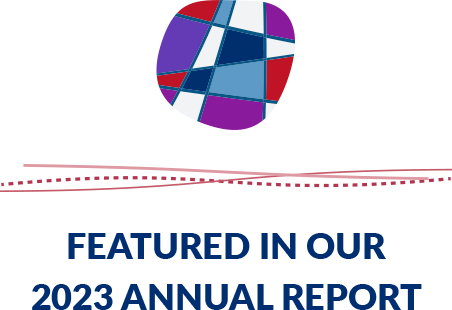Protecting landscapes that connect wildlife and communities
© Roshni Lodhia
Migrating wildebeest, elephants, tigerfish, and other species on the move do not recognize human boundaries and borders. These animals follow ancestral paths along unique wetlands in the heart of the Kalahari Desert.
World Wildlife Fund (WWF) and The Nature Conservancy (TNC) honor the inherent interconnectedness of the natural world and are working with communities across borders to protect critical ecosystems and wildlife in Southern Africa.
The greater Kavango Zambezi Transfrontier Conservation Area (greater KAZA) spans five countries in the southern half of Africa: Angola, Botswana, Namibia, Zambia, and Zimbabwe. This sprawling region includes significant populations of iconic wildlife, incredible freshwater resources, and a diversity of interconnected ecosystems.
In Angola, three important rivers (the Cuito and Cubango that make up the Okavango, and Cuando) not only support high levels of biodiversity, but also supply more than 95% of the water that turns the Kalahari Desert green and draws thousands of wildlife to the famed Okavango Delta oasis. This uniquely intact freshwater system flowing through the region is a critical life source for both humans and migrating wildlife.
Coordinating across boundaries for a shared vision
The KAZA Transfrontier Conservation Area encompasses 200,000 square miles – roughly equal to the size of France. This area is home to some of the region’s most iconic species. A 2022 aerial survey counted approximately 229,000 savannah elephants, 17,000 hippopotamuses, and 88,000 plains zebras. 2.7 million people also live in and depend on this landscape.
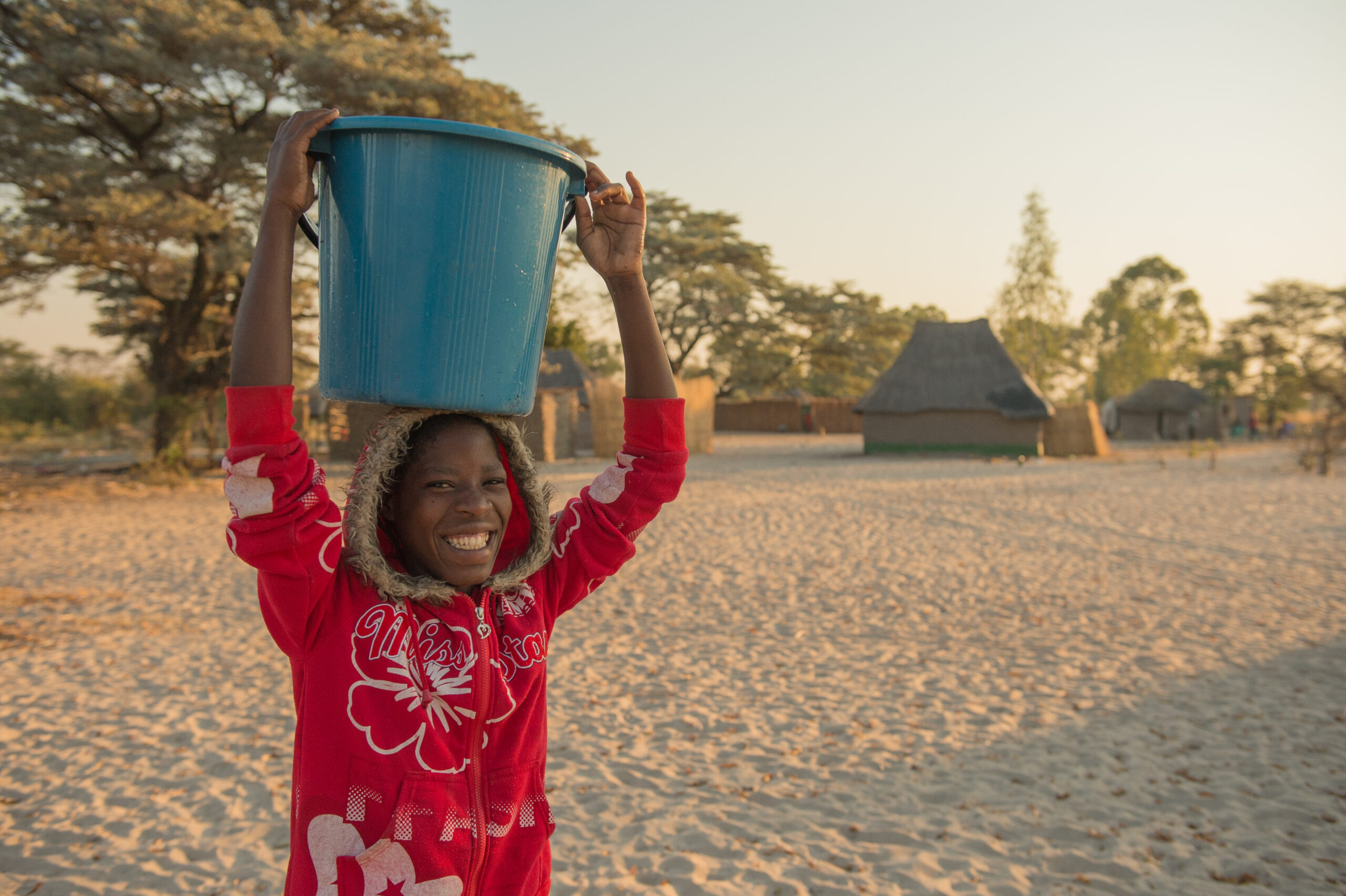
Natalia Sabata, who works at a nearby eco-tourism lodge, prepares breakfast for her family in Katonyana Village, Namibia. © Gareth Bentley / WWF-US
While boasting an abundance of wildlife and natural resources, people and nature in the greater KAZA region face significant and increasing challenges. These include food insecurity, fragmentation of ecosystems and wildlife corridors, human-wildlife conflict, habitat destruction, disruption of water flow, climate change, and wildlife crime.
The critical need to protect freshwater
As a vital life source, water is key in shaping wildlife health and movement throughout the region.
“KAZA is designed to create space for elephants to move as the rivers do, across borders and between protected areas.”- Dianne Tipping-Woods, originally published in World Wildlife Magazine.
Elephants, like rivers, cross national boundaries and connect diverse ecosystems and communities.
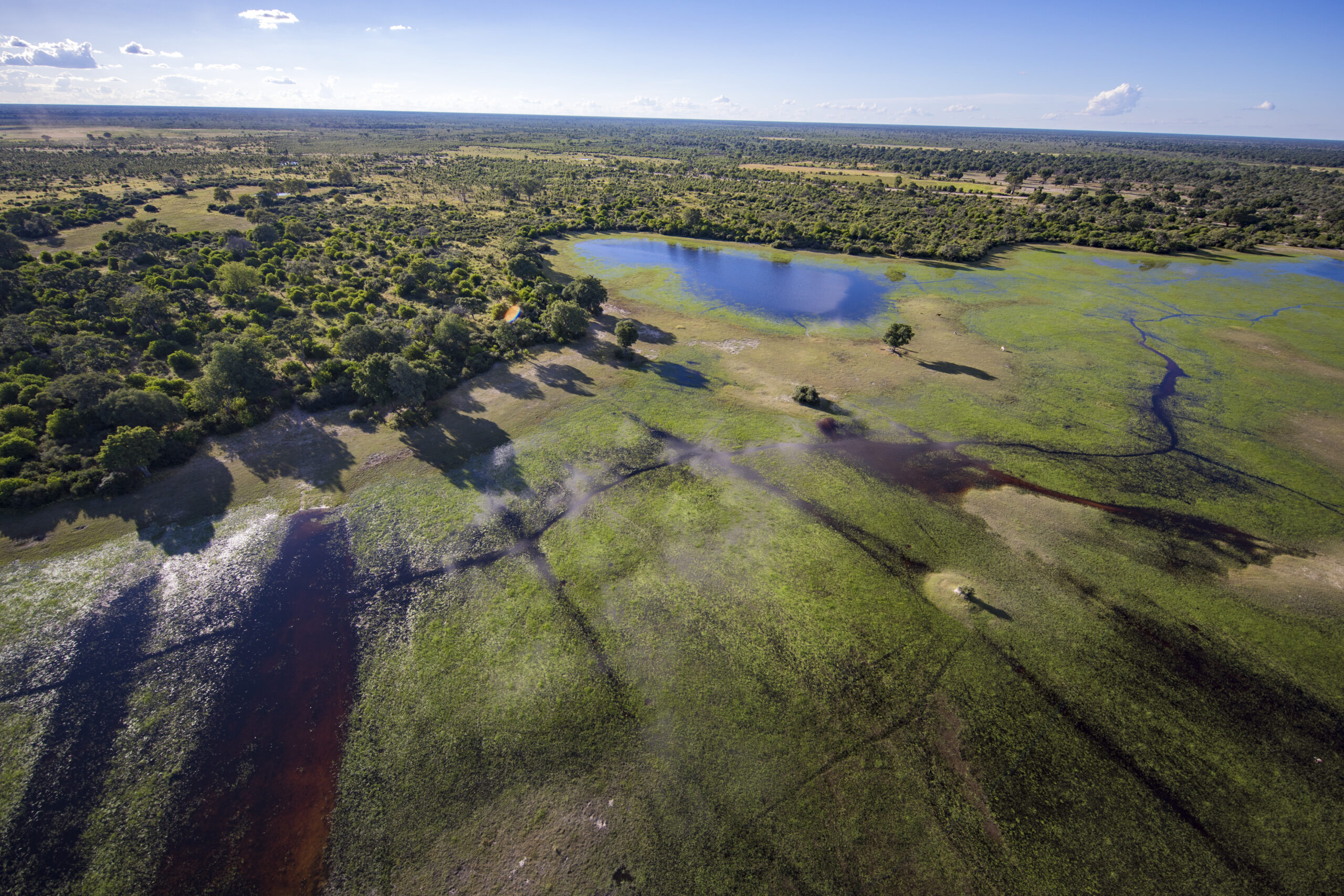
Elephant tracks visible on a floodplain in the Okavango Delta, Botswana. Elephants are known for engineering their environment. Other wildlife often follows in their tracks. © James Morgan / WWF-US.
“It’s thanks to the water that this area has some of Africa’s most remarkable natural attributes, from vast herds of elephants to World Heritage sites,” says Mike Knight, KAZA transboundary leader for WWF. “It’s critically important to make sure that water in the system keeps flowing.”
To advance conservation of this region, MACP is supporting work by TNC and WWF in both the Cuando and Okavango River systems.
WWF’s work centers around the Cuando River basin, one of the last remaining long, free-flowing rivers in Southern Africa. In the adjacent Cuito and Cubango River basins to the west, TNC is focused on conserving the headwater systems that feed the largest inland delta in the world: the Okavango River Delta.
The health of these water systems goes hand in hand with the health of surrounding communities and wildlife.
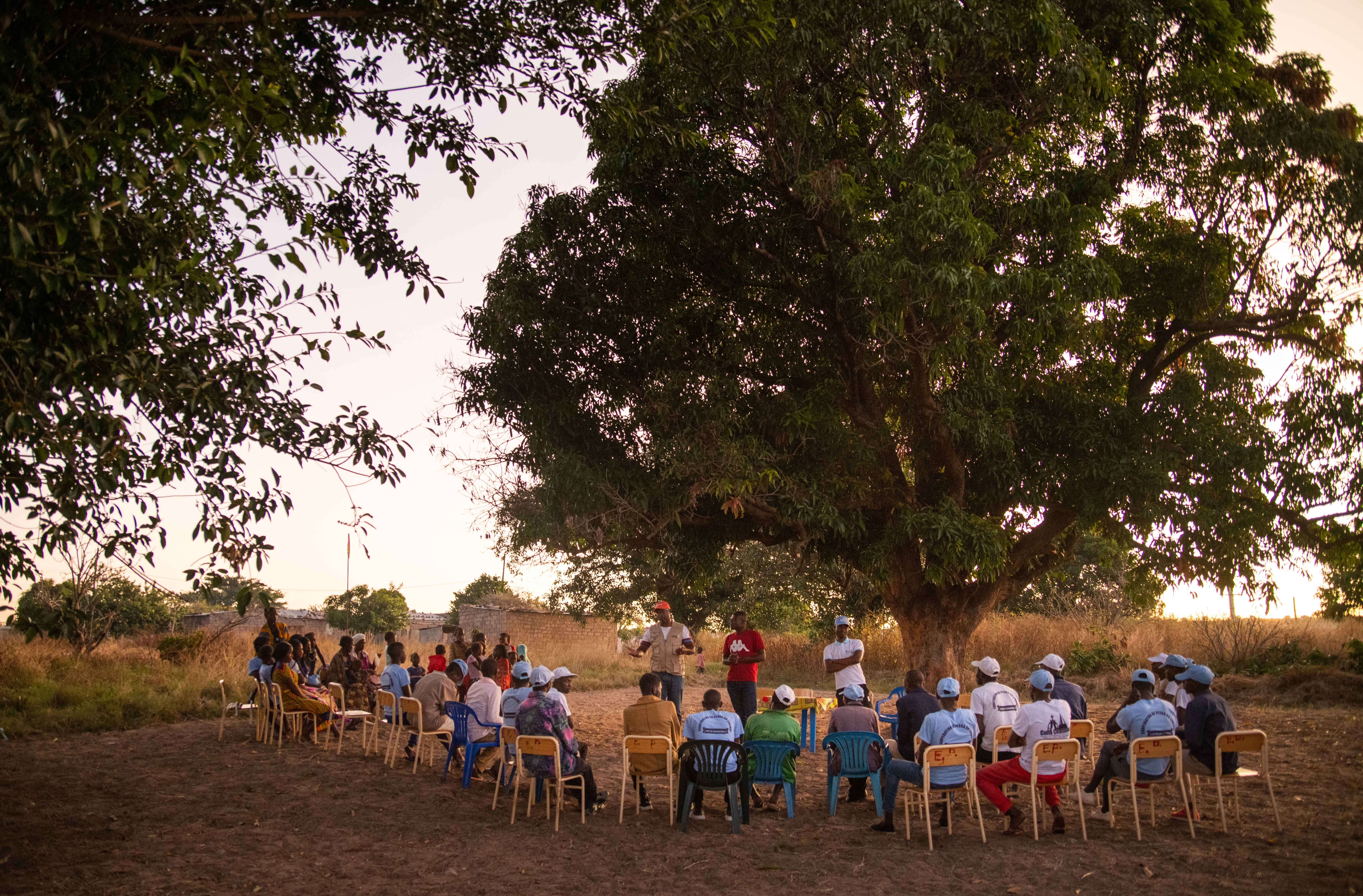
A Livambi fishery co-op meeting is led by Victor Barreto, TNC Okavango Fisheries Specialist, and Noel Valentino Carlos, ACADIR Technical Field Coordinator. © Roshni Lodhia
A vision for thriving communities and conservation
To protect the Cuando and Okavango freshwater systems, local communities must have the rights and tools to sustainably manage their natural resources, as well as the ability to provide for their families. That’s why TNC and WWF’s central approach in this region is community-led conservation.
“People are dependent on natural resources. We want to help them take full ownership of these resources, manage them, and also derive a livelihood.”
— Sekgowa Motsumi, TNC Okavango Basin Program Director
Here, TNC is working with communities and local partners to pilot sustainable forestry and fishery activities that address immediate threats to the watershed and tackle one of the root causes of habitat destruction: extreme poverty.
By collaborating on big-picture efforts such as building government partnerships and compiling science to inform on-the-ground action, TNC and WWF have figured out how to increase efficiencies and make funding go further. Staying coordinated also means learning from and supporting each other and a shared local partner, ACADIR.
The strong science, technical tools, and global experience that TNC and WWF bring to the region are complemented by the deep relationships and experience of ACADIR.
TNC, WWF, and local partners like ACADIR are responding to community needs and priorities along these freshwater systems. Local projects focus on the sweet spot where community interests and conservation opportunities overlap.
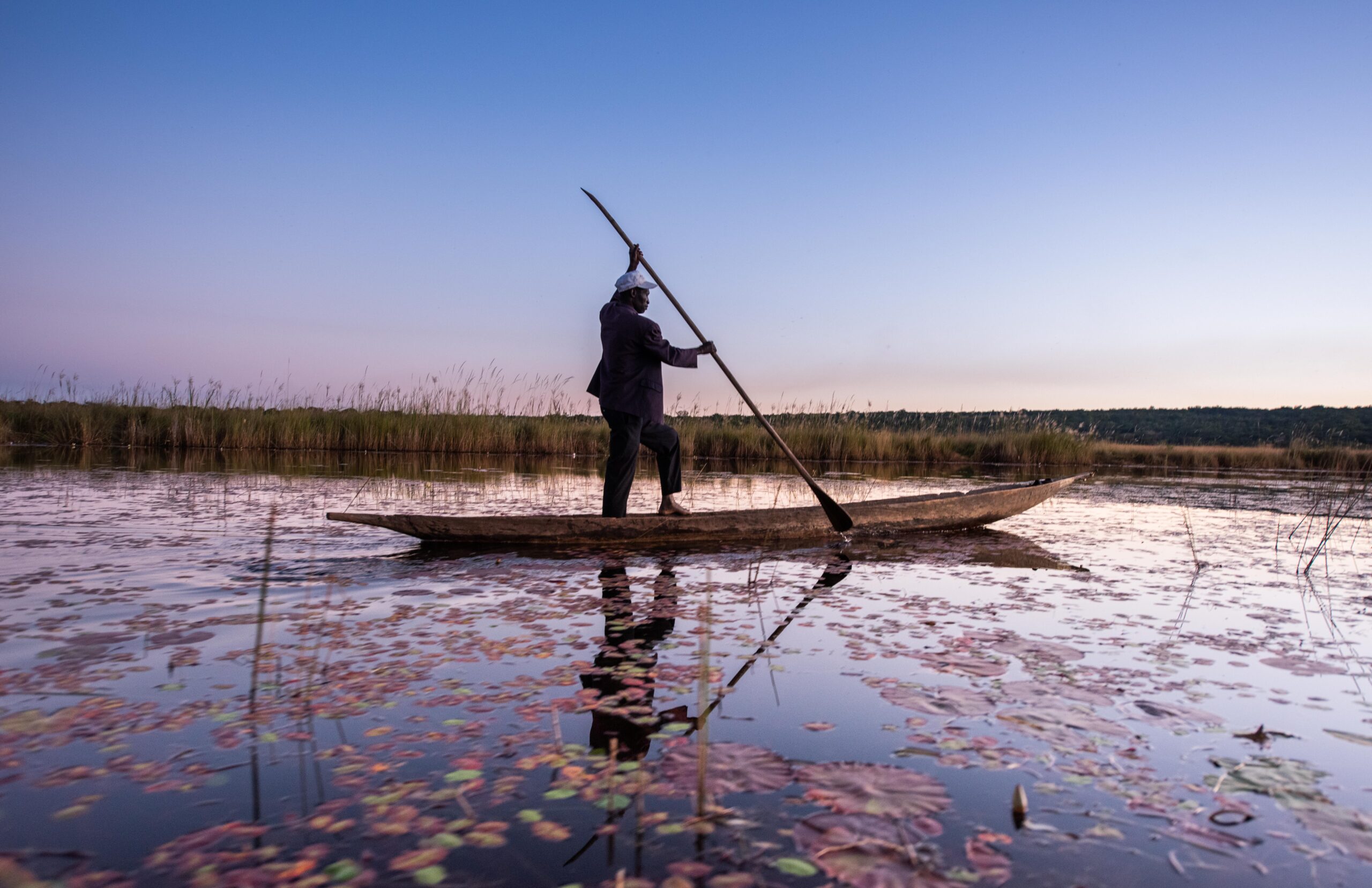
Fernando Kanohe, 53 years old, has been fishing along the Cuito River for 30 years. He is a member of the Livambi co-op. Here he is fishing in the lagoon. © Roshni Lodhia
Along the Cuando River, WWF and ACADIR have worked with five communities in the Jamba region to establish fish reserves and build the capacity of community members to sustainably manage the resource. Community members have welcomed the fisheries reserve model, and the Angolan government has been equally supportive.
Along the Cuito and Cubango Rivers, TNC and ACADIR have supported 14 villages to establish community-led fisheries and forest co-management institutions called cooperatives, including three cooperatives composed entirely of women. TNC’s focus on women’s empowerment is an important new dimension of work in these communities where women have historically been excluded or marginalized from natural resource management and other decisions that impact them and their families.
Working with communities is all about trust. It is the essential foundation for progress, and it takes time to build. ACADIR has worked hand-in-hand with Angolan communities since 2001. The trust earned through ACADIR’s investment in these relationships is what propels the partnership with WWF and TNC to go farther, faster.
You can read more about TNC’s work in the Okavango, and WWF’s focus on freshwater in the greater KAZA region in these respective magazine features. And learn from the local Angolan perspective of ACADIR here.
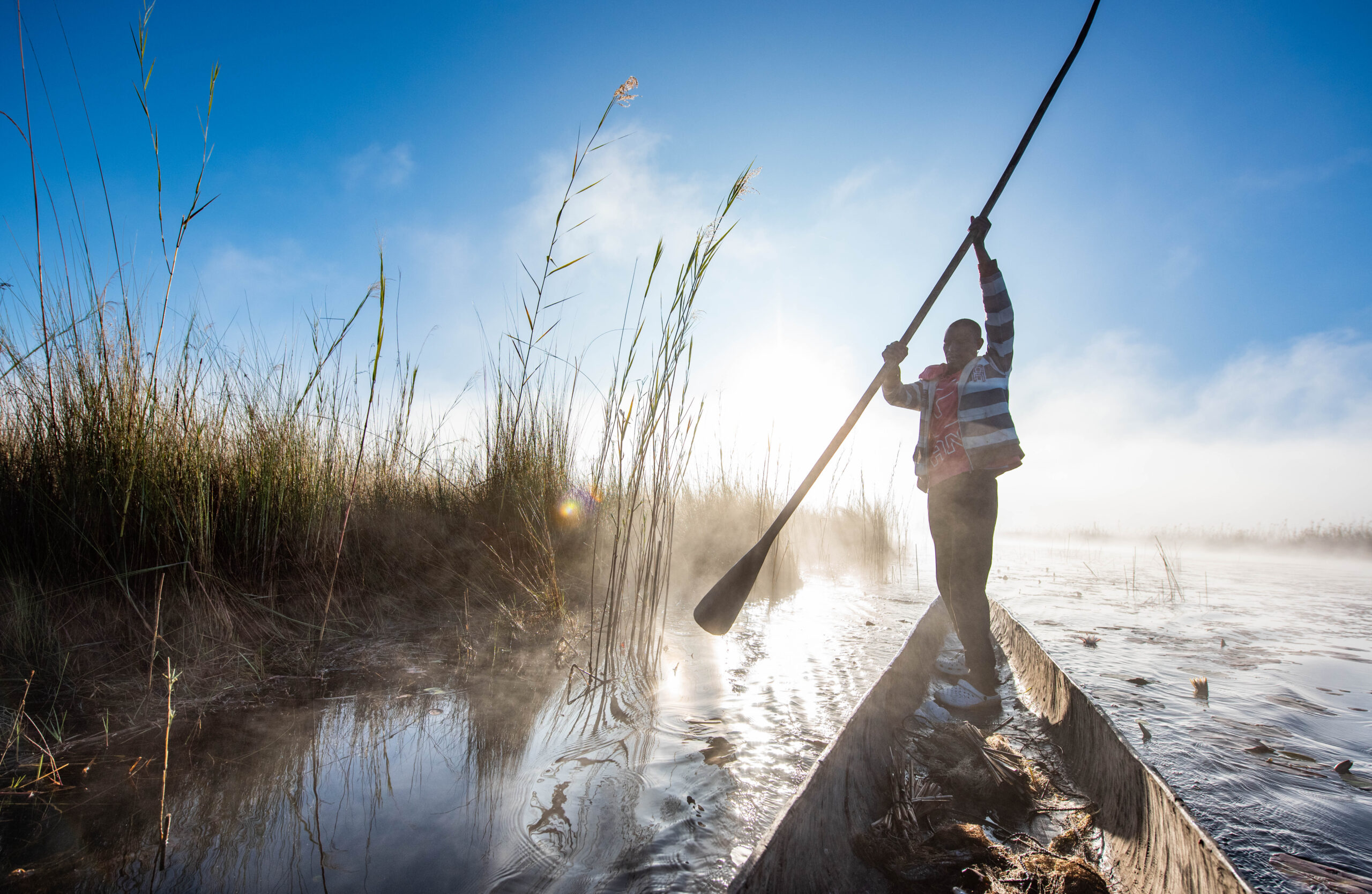
Augusto Chihinga, 33 years old, has been fishing for 20 years. He has 2 children. Here Augusto is checking his fishing nets at 7 AM in the lagoon. © Roshni Lodhia
Learning from an integrated approach
Margaret A. Cargill Philanthropies supports TNC and WWF’s efforts in the region, through multiple grants totaling more than $3.5 million.
While philanthropy has historically focused on discrete ecosystems like freshwater or grasslands, communities and wildlife do not operate in silos. TNC and WWF focus on the landscape as a whole, recognizing the inherent interconnectedness of the natural world.
MACP is learning from this integrated landscape approach in the region to understand how we can better support our partners and align with their cohesive approaches.
With its distinctive wildlife, rich biodiversity, and interdependent ecosystems and communities, the greater KAZA region is a powerful reminder that the well-being of people and the natural world is inextricably linked.
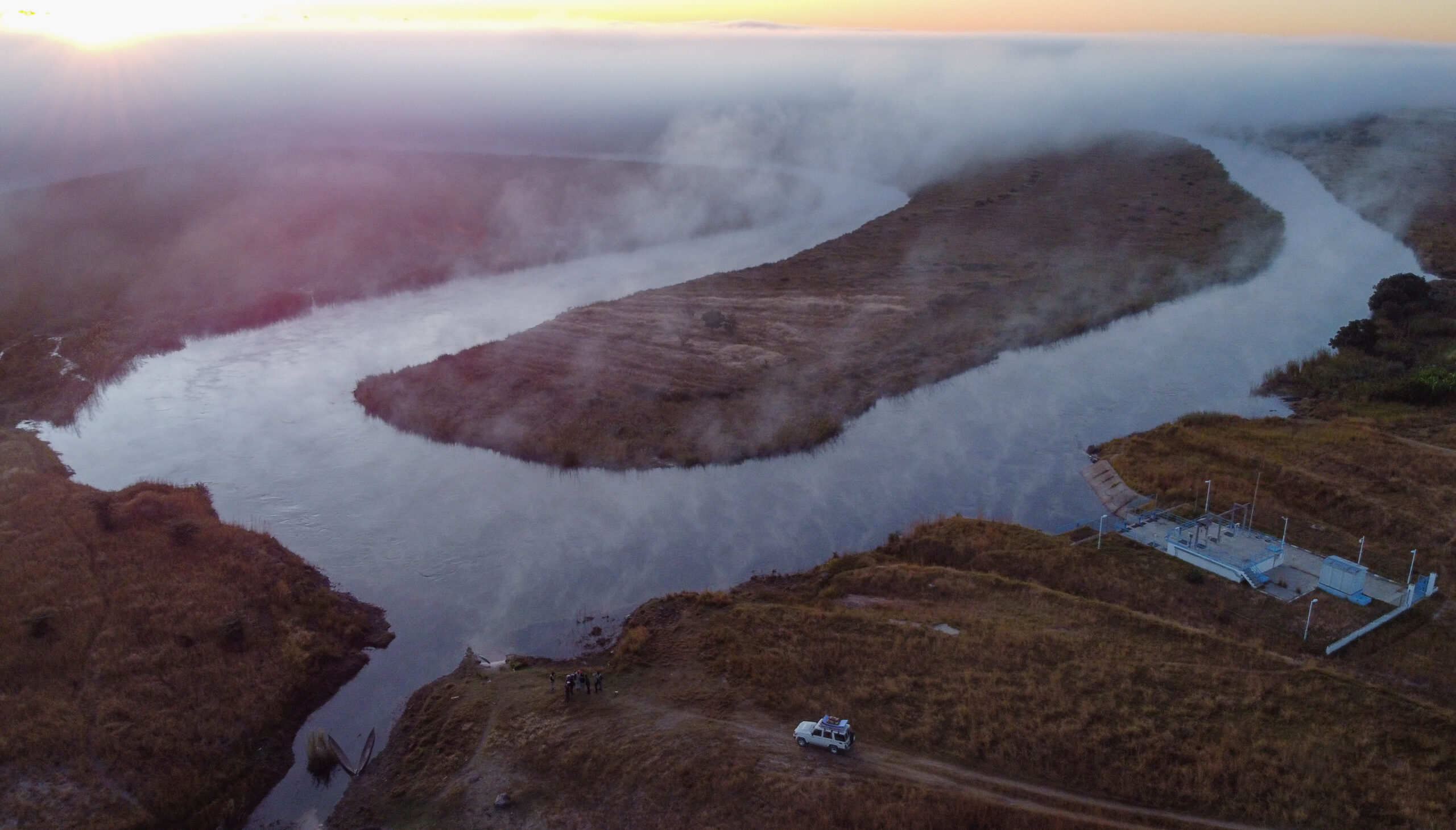
© Roshni Lodhia
